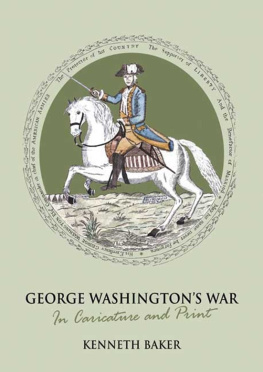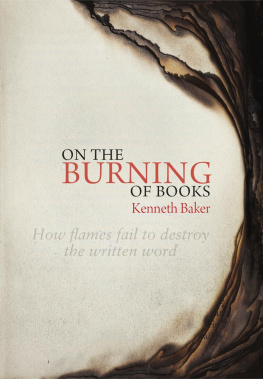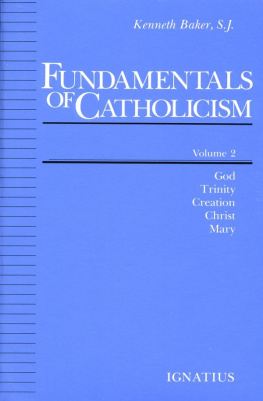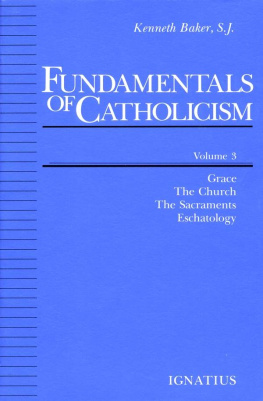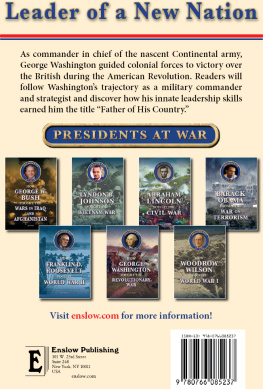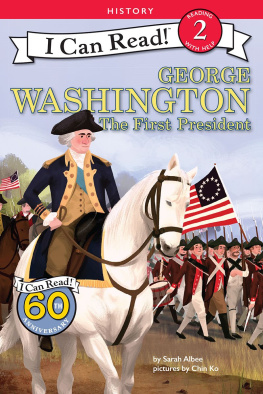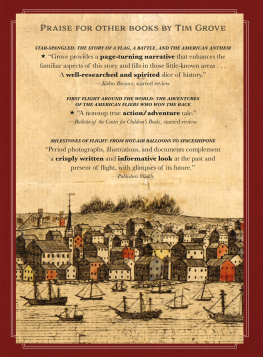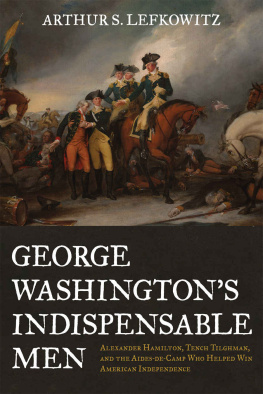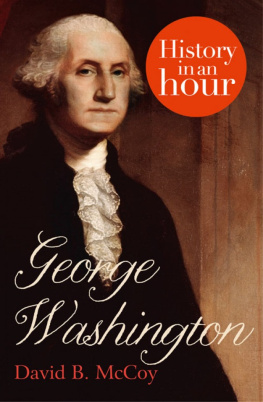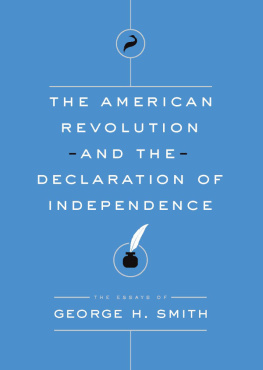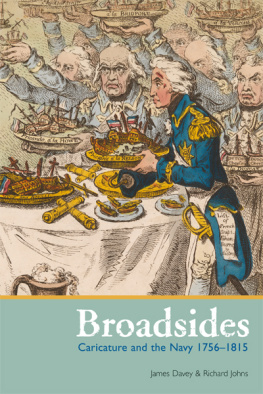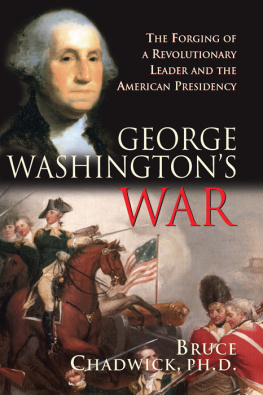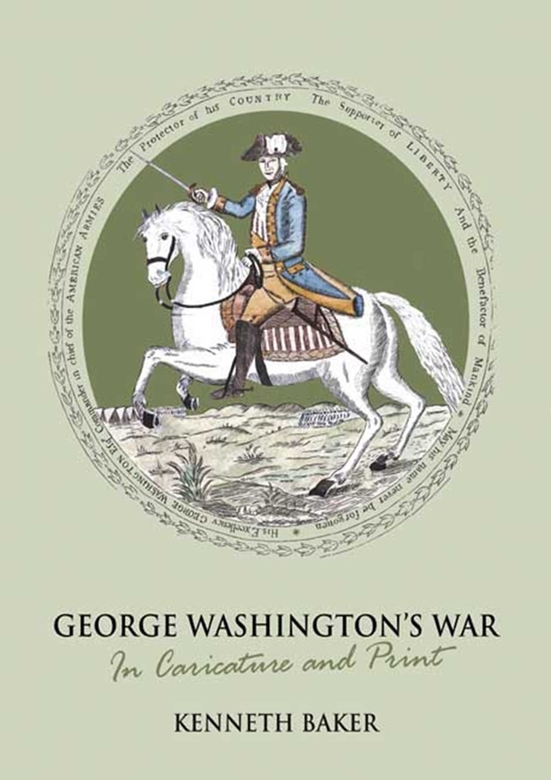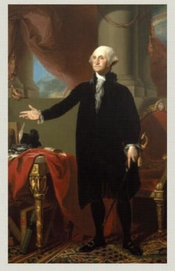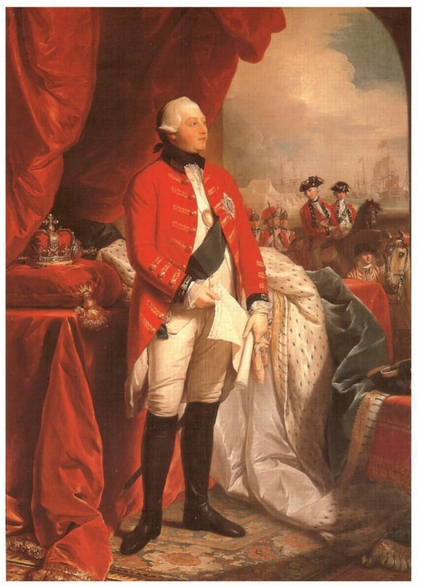EPILOGUE
King George
THE GREATEST IRONY of the American Revolution was that when George Washington assumed the role of president in 1787, he was given greater personal powers than were ever enjoyed by George III. He could appoint not only ministers but ambassadors, consuls, administrative officers and Supreme Court judges, and as commander-in-chief he could send his country to war, make treaties and conduct his own foreign policy independent of Congress.
George Washington
Washington to John Adams:
Sir, you have given yourselves a King under the title of President.
In 1776 it suited the rebels to demonise George III as a tyrant. In earlier years the target for attack had been the British Parliament and insensitive British ministers, but it was necessary to have a more personal target to motivate the patriotism of the foot soldiers of the revolution. The United States had to be seen to emerge as a nation by confronting and defeating a foreign despot.
The consequence of the Revolutionary War was that the people of America swapped a hereditary monarchy with limited powers for an elective monarchy which had much wider powers. The revolutionaries who had hoped for some wider distribution of power in the new American state were disappointed. Hannah Griffiths, a Quaker from Pennsylvania, in 1785 said it in verse:
The glorius fourth again appears
The day of days and the year of years
The sum of sad disasters.
When all the mighty gains we see
With all their boasted liberty
Is only change of masters.
The constitution agreed in September 1787 was shaped by a Conservative elite planters, farmers, merchants, lawyers, bankers and businessmen the radicals and revolutionaries were simply excluded. The President, the Senate, the House of Representatives and the Supreme Court created a centralised government whose powers far exceeded the British colonial system that it had overthrown. The popular uprising known as Shays Rebellion was ruthlessly suppressed in 1786 and in 1794 when disgruntled Pennsylvanians objected to an excise duty on whisky, which was virtually indistinguishable from the levies that Britain had imposed thirty years earlier. Washington ordered 15,000 troops to quell the revolt. Tom Paine, the hero of 1776 and who had coined the phrase The United States of America. on visiting again at the end of Washingtons second term, wondered whether you have abandoned good principles, or whether you ever had any.
Washington had become the first president in April 1789. He was partially deaf and almost toothless, but he knew that he was needed to bind the country together. One of his first acts was to designate 26 November as a day of Thanksgiving. The founders of the constitution had made the executive head, the president, also the ceremonial head of the country. Washington revelled in this and during the debate on what title should be used to show respect he secretly favoured the style of High Mightiness. He was one of the wealthiest men in America Robert Morris, the wealthy New York banker, referred to him as Americas first Millionaire. He had all the trappings of a monarch: six white horses drew his canary-coloured carriage and when he ceremonially visited New York a choir on a ship alongside praised him in verses sung to the tune of God Save the King. His wife, Martha, held court in her salon on Friday evenings, just as Queen Charlotte did in her drawing room in London, and her husband remained aloof, not shaking hands with anyone. Many appreciated these trappings of royalty the African-born Phyllis Wheatley put it neatly in verse:
A crown, a mansion, and a throne that shine,
With gold unfading, Washington! Be thine.
George III
On hearing that Washington was not going to stand again as president for a third term, he generously acknowledged that he was the most distinguished character of the age.
BOOKS FOR FURTHER READING
Bicheno, Hugh, Rebels and Redcoats, Harper Collins, 2003
Bingham, Clarence, Paul Revere s Engraving, Athenaeum, 1969
Black, Jeremy, War for America , Sutton Publishing, 1991
Black, Jeremy, George III: America s Last King , Yale University Press, 2006
Brooke, John, King George III, Constable, 1972
Burns, Eric, Virtue, Value and Vanity, Arcade Publishing, 2007
Cash, Arthur H, John Wilkes: The Scandalous Father of Civil Liberty . Yale University Press, 2006
Dolmetsch, Joan, Rebellion and Reconciliation , University Press of Virginia, 1976
Fenn, Elizabeth, Pox Americana: The Great Smallpox Epidemic 1775 -, Hill and Wang, 2001
Harvey, Robert, A Few Bloody Noses , John Murray, 2001
Hibbert, Christopher, George III: A Personal History , Viking, 1998
Jones, Michael Wyn, The Cartoon History of the American Revolution, London Editions, 1977
McCullough, David, 1776, Simon and Schuster, 2005
Murrell, William, A History of American Graphic Humour, Cooper Square Press, New York, 1933
National Maritime Museum, 1776, Catalogue for an exhibition held in 1976
Rienner, Lynne, Resistance, Politics and the American Struggle for Independence, Lynne Rienner Publishers 1986
Schlessinger, Arthur, Prelude to Independence, Alfred H Knopf, 1958
Simms, Brendan, Three Victories and a Defeat, Allen Lane, Penguin Books, 2007
Urban, Mark, Fusiliers, Eight Years with the Redcoats in America , Faber, 2007
Weintraub, Stanley, Iron Tears, Rebellion in America , Simon & Schuster, 2005
Wright, Esmond, Fabric of Freedom, Macmillan, 1961
LIST OF CHARACTERS
ADAMS, John, 1735-1826 Always slightly jealous of Washington. A Peace Commissioner in France and ambassador in London. A leading federalist and was Americas second president.
ADAMS, Samuel, 1722-1803 A failure in business but a brilliant success as an urban terrorist. Inveterate plotter, fanning flames of mayhem and master of rent-a-mob. Founded Sons of Liberty and signed the Declaration of Independence. Distrusted and overlooked.
ANDR, Major John, 1750-1780 Served as an officer at the battles of Brandywine, Paoli, Germantown and Monmouth. ADC to Howe in 1778 and appointed Adjutant-General by Clinton in October 1779. Responsible for running spies the M16 of the day. A long and secret correspondence with Benedict Arnold, who wanted to defect, led to a clandestine meeting in rebel-held territory in September 1780. Failing to get back to the English boat he had to spend a day disguised in civilian clothes; that was his death-knell as it made him a spy for which he was to hang.
ARNOLD, Benedict, 1741-1801 A brilliant field commander popular with his troops. Outstanding in the march to Quebec and Saratoga. Defected to the British in 1780 and led daring raids in Chesapeake Bay. Not really welcomed in Britain after the war, dying there poor and almost forgotten.
BRANT, Colonel Joseph, 1742-1807 The Mohawk British army officer who robustly resisted Washingtons ethnic cleansing of Indian tribes. Visited London twice and was awarded land concessions from the British Government for his people in Canada.
BURGOYNE, John, 1722-1792 Gentleman Johnny responsible for Britains first devastating defeat at Saratoga. Returned to London to defend his reputation and serve the Whigs.

